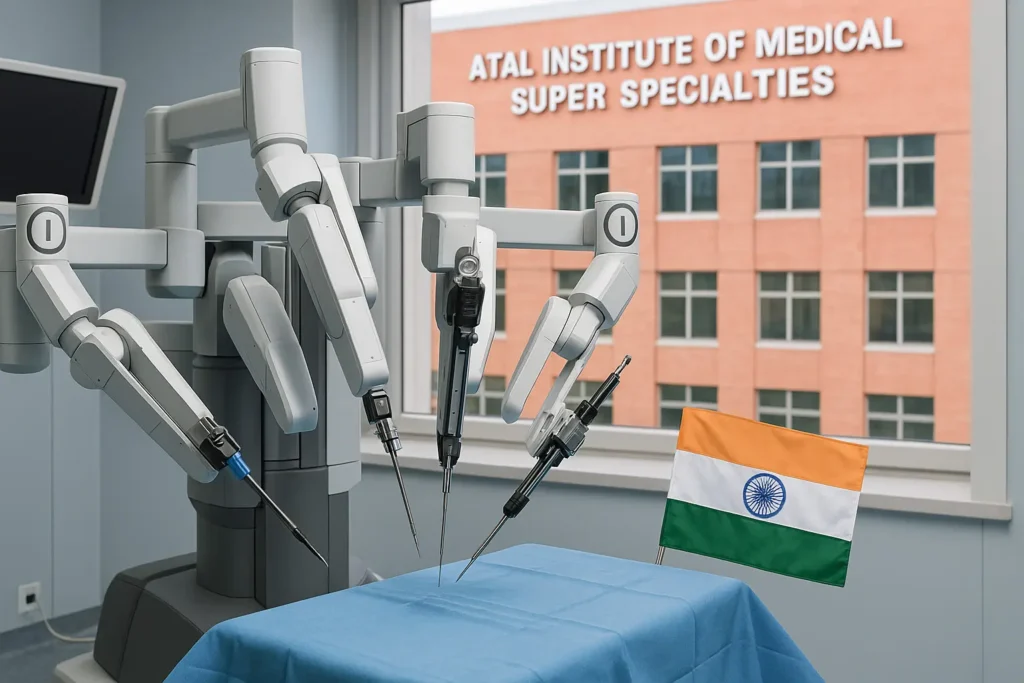In a significant step toward modernizing public healthcare infrastructure, Himachal Pradesh has introduced robotic-assisted surgery in a government-run facility for the first time. The state has installed a ₹28 crore robotic surgical system at the Atal Institute of Medical Super Specialities (AIMSS) in Chamiyana, near Shimla, marking a pivotal shift in its approach to delivering advanced medical care.
Officials say the robotic surgery unit—modeled on the Da Vinci surgical systems used at AIIMS Delhi—is expected to become operational in July. The technology promises to offer minimally invasive procedures with greater precision, reduced post-operative complications, and faster patient recovery times.
A Healthcare Milestone
Chief Minister Sukhvinder Singh Sukhu described the move as a “transformational initiative” aimed at reducing the dependency of patients on out-of-state medical institutions for specialized treatment. According to government data, nearly 9.5 lakh residents of Himachal Pradesh travel to other states annually for advanced procedures, leading to an estimated outflow of ₹1,350 crore each year.
“Our goal is to build world-class capabilities within the state and reduce the economic and emotional burden on our citizens,” Mr. Sukhu said during a review meeting.
The robotic surgery project is part of a broader ₹1,570 crore plan to upgrade public health infrastructure across the state. The plan includes investments in advanced diagnostic services, specialty units, and new facilities at medical colleges in Tanda, Hamirpur, and Shimla.
Precision Meets Public Access
The installation at AIMSS is just the beginning. A second robotic system is planned for the Dr. Rajendra Prasad Government Medical College in Tanda. Over time, robotic surgery is expected to be extended to other medical colleges in Hamirpur and Shimla, making Himachal one of the few Indian states offering this level of advanced surgical care in its public health system.
“Robotic surgery not only benefits patients but also helps surgeons perform long and complex procedures with improved accuracy and reduced fatigue,” said Dr. Brij Lal, Principal of AIMSS. He added that the system enhances 3D visualization, stability, and control—offering outcomes that rival those in elite private hospitals.
A Model for Regional Health Reform
Himachal Pradesh’s adoption of robotic technology in public hospitals could serve as a model for other Indian states seeking to bridge the gap between rural patients and cutting-edge healthcare. Unlike metro cities that often have private hospitals with such equipment, hilly and remote regions face logistical and financial barriers in accessing specialized surgery.
By investing in robotic systems under public funding, the state government hopes to democratize access to high-end medical care.
The success of the program, however, will depend on continued training for surgical teams, robust maintenance of equipment, and integration with existing systems of care. For now, though, the move has raised hopes among patients and professionals alike that precision medicine might no longer be a privilege limited to India’s biggest cities.


